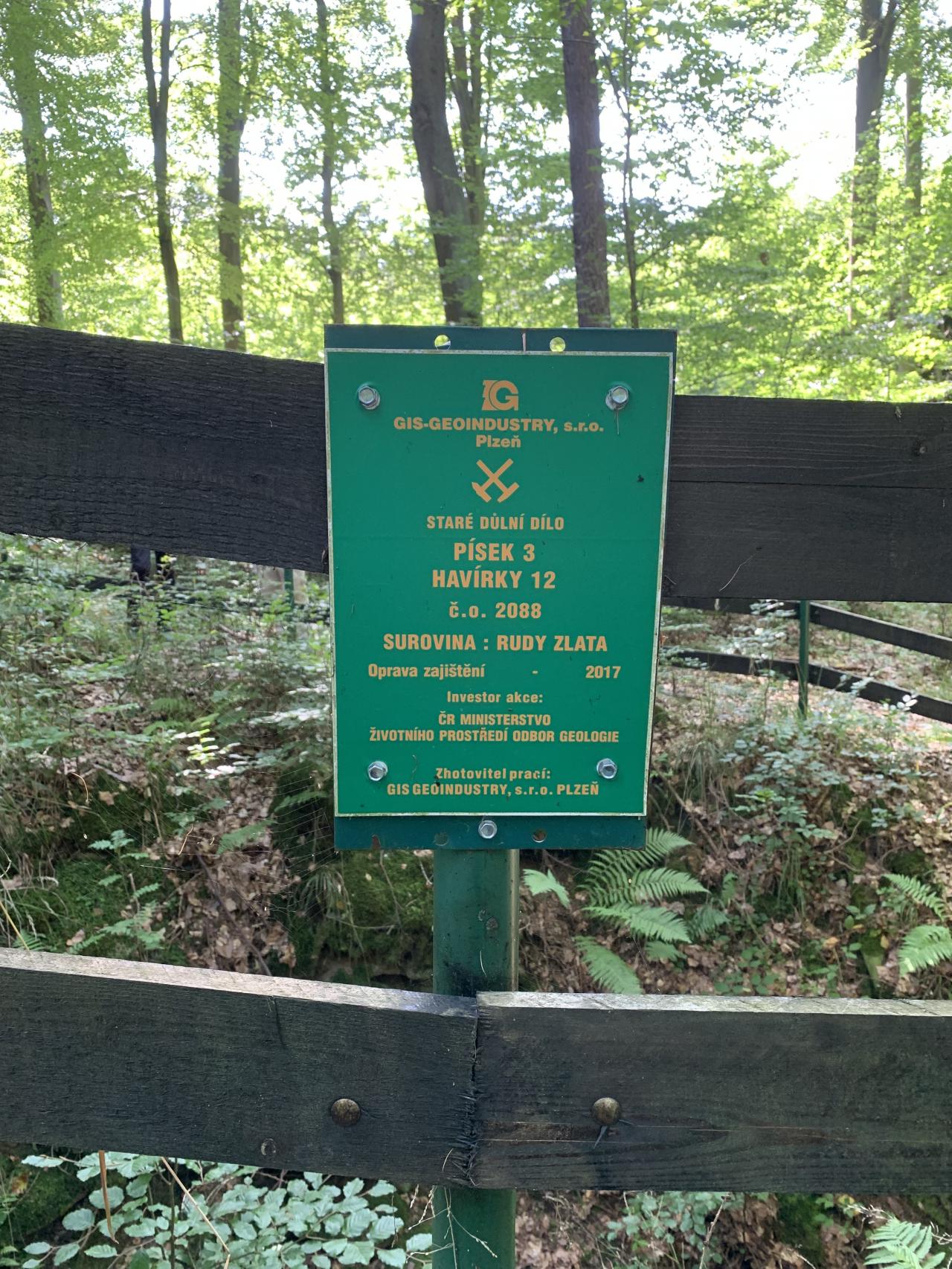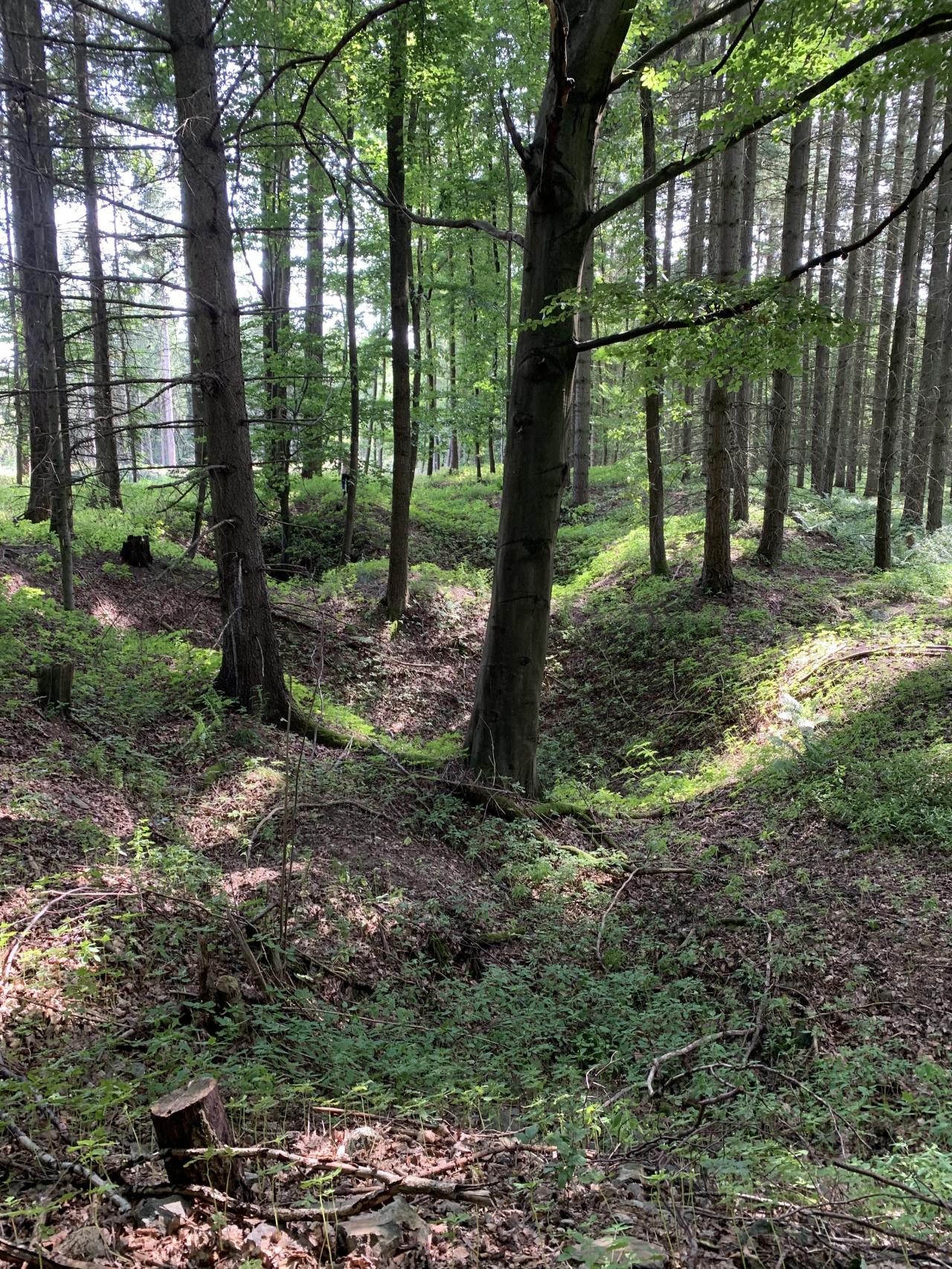

Gold Mine Havirky in the Písek Mountains
- Havirky is one of the most famous gold mines in the Písek region; mining activity reached its peak here in the 15th and 16th centuries. This glorious era can be recalled today if you walk along the shafts and sinkholes, which are over one kilometre long. The site is significant for the history of the natural sciences as it includes the history of mineralogy and geology as well as chemistry/alchemy.
- Gold has been acquired in the surroundings of Písek since ancient times by panning gold-bearing alluvium in the Otava river. The gold obtained in this way is not only of higher quality than that mined underground, but also of higher purity. Other minerals are also present in the Otava sand: garnet, rutile, tourmaline, ruby, beryl and sapphire. After depletion of the alluvium, primary deposits were sought by tracing gold-bearing gravels and sands, and gold-bearing quartz began to be extracted by mining. The extracted rock was then processed - roasted, crushed and ground in mills. According to estimates, up to a thousand tonnes of precious metal came from Bohemian deposits, of which 60 percent was panned and the rest was mined from the depths of the earth.The first written document of deep mining in the Havirky gold mine is from 1336. There were most probably four main shafts at Havirky - St. Bernard, St. Roch, St. Nicholas and St. Cleopas. Interestingly, the most profitable mining is associated with the medieval period, because the richest upper parts of the gold-ore quartz were mined at this time. The great advantage of this mining was that there were no technical problems relating to the flooding of shafts by groundwater. In the middle of the 17th century mining at Havirky was discontinued, but in the 1870s and again in 1919 it was resumed. These attempts were unsuccessful. At the turn of the 19th and 20th centuries, the prominent mineralogist August Krejčí, who was intensively involved in the mineralogy of the Havirky gold mine for a long time, sought to establish the scientific research of historical gold mining in the Písek region. Krejčí`s commitment, as well as the importance of this and other gold mines, is commemorated today in the exhibition of the Prácheňské Museum in Písek.When visiting this site, you can walk along shafts and sinkholes (caution is especially important with unfenced shafts), which are generally flooded with water. The ancient mining activity can be traced in two lines, which follow the tectonic disturbances in the bedrock, and from the geological point of view, these are the biotite granite-gneiss of the Moldanubium zone complex. The longer line is about one kilometre long (including one branch) and the second is about 300 metres long.
- References
- Fröhlich, J.: Zlato na Prácheňsku. Písek 2006.Kuna, M. a kol.: Archeologický atlas Čech. Vybrané památky od pravěku do 20. století. Praha 2016, s. 257–260.
- LeO
- Show in map
Keywords
; ; ; ;
Connected places
August Krejčí`s Grave and Commemorative Plaque in PísekPrácheňské Museum in Písek






